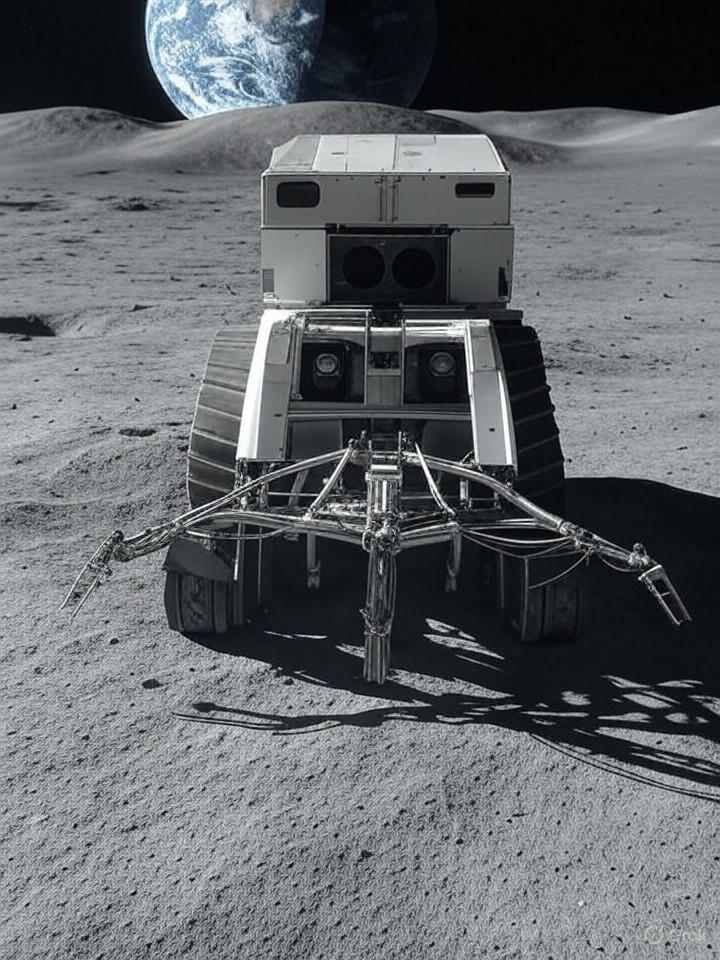Science
Interlune Aims for Lunar Helium-3 Mining by 2028

A pioneering mining company, Interlune, has announced plans to extract helium-3 from the lunar surface, aiming for commercial operations by 2028. This rare isotope, which could significantly impact industries including clean energy and quantum computing, has been identified in deposits on the moon, marking a notable advancement in space mining. The announcement highlights increasing interest from both national and private sectors, as they strive to harness the moon’s untapped resources.
The discovery of helium-3 is particularly significant because it is scarce on Earth but abundant in lunar regolith, mainly due to billions of years of exposure to solar wind. Helium-3 is considered non-radioactive and ideal for use in nuclear fusion reactors, offering the potential for sustainable and waste-free energy solutions. Industry experts suggest that helium-3 could be valued at up to $20 million per kilogram, driven by demand from high-tech applications.
Geopolitical Stakes in Lunar Resource Competition
This development comes in the context of escalating competition between global superpowers, particularly the United States and China, both of which are vying for dominance in lunar exploration. According to a report from Space.com, Interlune’s initiatives align with broader strategies to secure helium-3 for quantum computing, where it serves as a vital coolant for maintaining ultra-low temperatures.
Interlune has already entered into agreements, including one to supply up to 10,000 liters of extracted helium-3, indicating early confidence from the market. Notably, the company has introduced a prototype harvester capable of processing 110 tons of lunar soil per hour, as reported by The Washington Post. This innovative machinery addresses the challenges of operating in the extreme conditions of space, such as fluctuating temperatures and the lack of atmosphere, while also aiming to limit environmental disruption on the moon.
Technological Innovations and Economic Implications
The applications of helium-3 extend beyond just energy. It has potential uses in medical imaging and supercomputing, where its scarcity on Earth has driven prices higher. A recent article in Forbes highlighted that Interlune is developing autonomous robotic systems for mining, with plans for these systems to potentially become operational by 2028. This timeline coincides with NASA’s Artemis program and China’s Chang’e missions, which may provide essential infrastructure for transport and processing of lunar materials.
Despite the promising outlook, significant challenges remain. The high costs associated with space travel and the uncertain economic feasibility of transporting materials back to Earth are major hurdles. Nevertheless, proponents believe that in-situ resource utilization—using materials sourced from the moon for construction or fuel—could mitigate some of these expenses. As described by Interesting Engineering, global powers perceive helium-3 as “moon gold,” with Russia also entering the competition, potentially altering the geopolitical landscape surrounding energy resources.
Financially, Interlune is attracting substantial investment as it works to deploy multispectral cameras for detailed resource mapping, as noted by Autoevolution. A partnership with quantum cryogenics firm Bluefors represents one of the largest contracts in the space resource sector, further emphasizing the critical importance of helium-3 in advancing computational technologies.
Ethical considerations surrounding space mining are also surfacing, particularly regarding equitable access to lunar resources under the Outer Space Treaty. Critics voice concerns about a new wave of colonialism, while supporters argue that shared technological advancements could benefit all, including safer fusion energy that addresses climate change challenges.
Looking ahead, the successful extraction of helium-3 could stimulate a broader space economy, potentially expanding into other resources such as water ice and rare earth minerals. Insights from 21st Century Tech Blog indicate that this could support the establishment of permanent lunar settlements, reducing the need for resources transported from Earth. For industry experts, the scalability of Interlune’s prototype operations will be crucial; success could lead to billions in investment, transforming outer space from a scientific realm into a lucrative sector.
Ultimately, this lunar initiative marks a fundamental shift, positioning the moon’s surface as a potential hub for innovation and commercial activity. As extraction technologies develop, the ambition of harnessing space resources comes closer to fruition, promising significant implications for both technological advancement and the future of energy on Earth.
-

 Science2 weeks ago
Science2 weeks agoInterstellar Object 3I/ATLAS Emits Unique Metal Alloy, Says Scientist
-

 Business2 weeks ago
Business2 weeks agoIconic Sand Dollar Social Club Listed for $3 Million in Folly Beach
-

 Politics2 weeks ago
Politics2 weeks agoAfghan Refugee Detained by ICE After Asylum Hearing in New York
-

 Health3 weeks ago
Health3 weeks agoPeptilogics Secures $78 Million to Combat Prosthetic Joint Infections
-

 Science2 weeks ago
Science2 weeks agoResearchers Achieve Fastest Genome Sequencing in Under Four Hours
-

 Health2 weeks ago
Health2 weeks agoResearcher Uncovers Zika Virus Pathway to Placenta Using Nanotubes
-

 Lifestyle2 weeks ago
Lifestyle2 weeks agoJump for Good: San Clemente Pier Fundraiser Allows Legal Leaps
-

 World3 weeks ago
World3 weeks agoUS Passport Ranks Drop Out of Top 10 for First Time Ever
-

 Top Stories2 weeks ago
Top Stories2 weeks agoChicago Symphony Orchestra Dazzles with Berlioz Under Mäkelä
-

 Business2 weeks ago
Business2 weeks agoSan Jose High-Rise Faces Foreclosure Over $182.5 Million Loan
-

 Entertainment2 weeks ago
Entertainment2 weeks agoJennifer Lopez Addresses A-Rod Split in Candid Interview
-

 World2 weeks ago
World2 weeks agoRegional Pilots’ Salaries Surge to Six Figures in 2025








